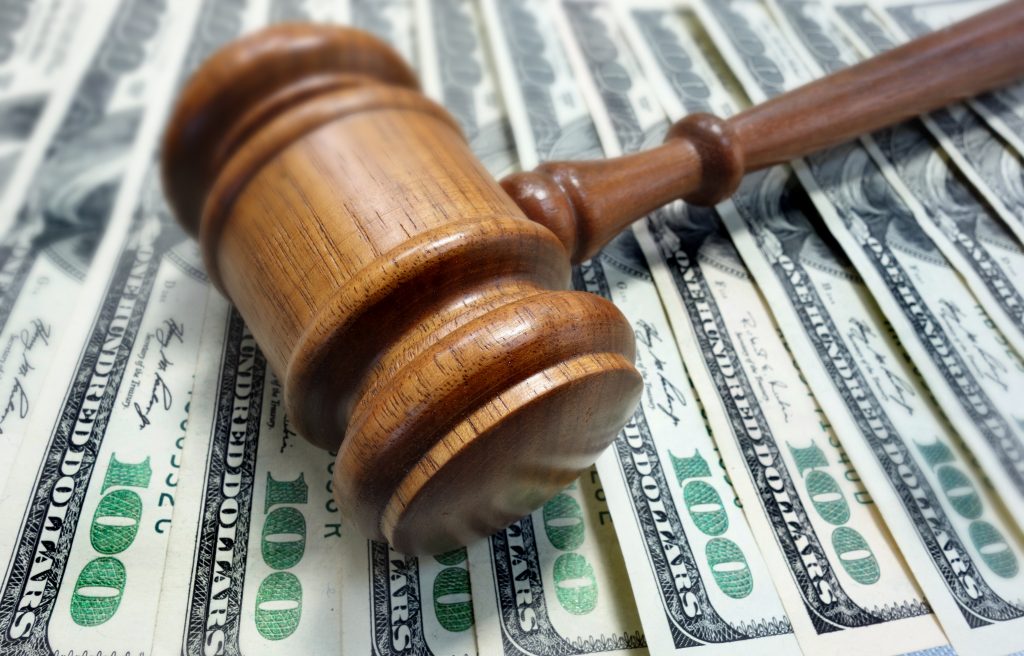“[The Safe Harbor] exemption applies as long as there is a reasonable basis for believing that the use of the patented invention will produce the types of information that are relevant to an FDA submission. Moreover, each of the accused activities must be evaluated separately to determine whether the exemption applies.”
 Yesterday, December 16, in an opinion authored by Judge Moore, the Court of Appeals for the Federal Circuit (CAFC) affirmed the District of Delaware’s decision that: 1) U.S. Patent No. 5,856,298 (the ‘298 patent) belonging to Amgen was infringed by Hospira and not invalid; 2) 14 batches of drug substance for Hospira’s erythropoietin biosimilar drug product were not covered by the Safe Harbor provision of 35 USC § 271(e)(1); and 3) Amgen had proven that it was entitled to a jury verdict of $70 million in damages. Additionally, the CAFC affirmed the jury’s verdict of noninfringement of U.S. Patent No. 5,756,349 (the ‘349 patent).
Yesterday, December 16, in an opinion authored by Judge Moore, the Court of Appeals for the Federal Circuit (CAFC) affirmed the District of Delaware’s decision that: 1) U.S. Patent No. 5,856,298 (the ‘298 patent) belonging to Amgen was infringed by Hospira and not invalid; 2) 14 batches of drug substance for Hospira’s erythropoietin biosimilar drug product were not covered by the Safe Harbor provision of 35 USC § 271(e)(1); and 3) Amgen had proven that it was entitled to a jury verdict of $70 million in damages. Additionally, the CAFC affirmed the jury’s verdict of noninfringement of U.S. Patent No. 5,756,349 (the ‘349 patent).
Human Erythropoietin Therapeutic Protein
The ‘298 patent claims methods of producing isoforms of human erythropoietin (EPO), a therapeutic protein for the treatment of anemia, which is marketed as Epogen. EPO molecules can have different numbers of sialic acids that stem from the branching of glycosylation sites. The ‘298 patent claims methods of producing isoforms with a specific number of sialic acids per molecule, with each isoform exhibiting in vivo activity that corresponds to the number of sialic acids it possesses. The claimed isoforms are described as having a single isoelectric point (pI) and the same amino acid sequence. The ‘349 patent involves recombinant cells that are capable of producing EPO at specific rates in culture, and its claims are directed to cells that produce certain units of EPO as determined through protein level measurement via radioimmunoassay.
Amgen sued Hospira for infringement in 2014 when Hospira submitted a Biologics License Application (BLA) to the FDA to get approval for its biosimilar to Epogen. Amgen argued that 21 batches of drug substance for Hospira’s biosimilar infringed claims 24 and 27 of the ‘298 patent and claims 1-7 of the ‘349 patent. The jury found the ‘349 patent not invalid and not infringed, and the jury found 14 of the 21 batches referenced to infringe upon the ‘298 patent. Both parties appealed the decision.
CAFC Analysis
On appeal, Hospira contended that it is entitled to judgment as a matter of law for noninfringement of claim 27 of the ‘298 patent, because the district court’s claim construction was erroneous, and Amgen did not establish that Hospira’s product infringed every limitation of the claims. The CAFC disagreed. The district court construed the claim 27 limitation to mean “a mixture of two or more erythropoietin isoforms of claim 1.” It held that the claim language did not suggest that individual isoforms of claim 1 must be separately prepared prior to mixture, and thus instructed the jury accordingly. Hospira argued that claim 27 requires a mixture of isolated isoforms from claim 1, and that the court’s claim construction was contrary to the testimony submitted by the inventor. The CAFC nevertheless found that the claim recitation of “preparing a mixture of two or more erythropoietin isoforms of claim 1” does not limit preparation by any particular method and that the specification contemplates multiple ways of preparing isoform mixtures.
Additionally, Hospira argued that a jury could not have found infringement because Amgen did not attempt to prove the limitations of claim 1 at trial, even though it was referenced in claim 27, and because Amgen did not provide sufficient evidence to establish that Hospira’s EPO has a predetermined in vivo specific activity. The CAFC found that, on the contrary, Amgen presented sufficient evidence to satisfy the limitations of claim 1 through inventor and expert testimony. The court also found that evidence supported the notion that portions of Hospira’s BLA confirmed that Hospira’s EPO is a mixture of isoforms with a single pI and specific number of sialic acids per molecule. Hospira also argued that claim 27 is anticipated by U.S. Patent No. 4,667,016 (Lai) because it disclosed the use of ion exchange chromatography to prepare a mixture of active EPO through the separation of impurities. The CAFC found that claim 27 was not anticipated because Lai is directed to processes of efficient recovery of EPO from a fluid without any reference to an EPO isoform composition with predetermined in vivo activity.
Safe Harbor
The CAFC next moved to the Safe Harbor provision of 35 U.S.C. § 271(e)(1), which provides a defense for infringement of patents directed to the manufacture of recombinant DNA and other processes involving site specific genetic manipulation techniques. Hospira asserted that the jury instructions were erroneous, and no reasonable jury could have found that only some of its drug substance batches were protected by the Safe Harbor defense. Hospira argued that the instructions should have focused on how each batch was used instead of why each batch was manufactured, because it was only required to prove that the use of the patented invention was reasonably related to information disclosed to the FDA, not the manufacture. The CAFC disagreed, finding that the safe harbor applies only if there is a reasonable basis for believing that the use of the patented invention will produce information relevant to that of the FDA submission, and also that each accused activity must be evaluated separately for applicability of the exception. Instead it agreed with the district court’s jury instructions that “if Hospira has proved that the manufacture of a particular batch was reasonably related to developing and submitting information to the FDA . . . Hospira’s additional underlying purposes for the manufacture and use of that batch do not remove that batch from the Safe Harbor defense.”
Furthermore, the only batches that the jury found to be protected were two batches used to both qualify Hospira’s process to make the drug and qualify alternate equipment, and five batches used for preapproval inspection by the FDA. The CAFC found that substantial evidence supported the jury finding that the remaining batches were unprotected under the Safe Harbor because they were not manufactured solely for uses related to the development and submission of information to the FDA. Subsequent batches, argued the CAFC, were used to test stability outside of the production requirements of the FDA. Lastly, Hospira argued that the damages award was decided erroneously because the testimony of Amgen’s expert witness regarding damages was inadmissible under the Daubert standard. The CAFC held that, because Hospira cross-examined the expert and brought in testimony of its own expert, and because substantial evidence supported the jury’s damages award, there was no reason to vacate it.
CAFC Opinion on Amgen’s Appeal
Amgen also appealed a jury verdict that Hospira did not infringe claims 1-7 of the ‘349 patent. Amgen argued that Hospira’s use of dot-blot assays infringed the ‘349 patent because the results could easily be converted to biological units and thus EPO specific activity as described in the ‘349 patent. Additionally, Amgen argued that Hospira’s failure to offer competing evidence means that no reasonable jury could have concluded that Amgen failed to meet its burden on infringement. The CAFC disagreed, finding that Hospira’s expert sufficiently explained that the dot-blot assay results could be an overestimation and thus not a proper correlation to EPO production rates. Amgen also argued that the district court should have granted it a new trial, because Hospira’s demonstrative aid improperly influenced the jury by inaccurately describing claim construction. The CAFC disagreed again, holding that it was within the district court’s discretion to allow the demonstrative aid.
John Labbe of Marshall Gerstein & Borun argued for Amgen and Thomas Meloro of Wilkie Farr & Gallagher argued for Hospira.
Image Source: Deposit Photos
Image ID: 31404977
Copyright: zimmytws

![[IPWatchdog Logo]](https://ipwatchdog.com/wp-content/themes/IPWatchdog%20-%202023/assets/images/temp/logo-small@2x.png)

![[Advertisement]](https://ipwatchdog.com/wp-content/uploads/2024/04/Patent-Litigation-Masters-2024-sidebar-early-bird-ends-Apr-21-last-chance-700x500-1.jpg)

![[Advertisement]](https://ipwatchdog.com/wp-content/uploads/2021/12/WEBINAR-336-x-280-px.png)
![[Advertisement]](https://ipwatchdog.com/wp-content/uploads/2021/12/2021-Patent-Practice-on-Demand-recorded-Feb-2021-336-x-280.jpg)
![[Advertisement]](https://ipwatchdog.com/wp-content/uploads/2021/12/Ad-4-The-Invent-Patent-System™.png)






Join the Discussion
No comments yet.